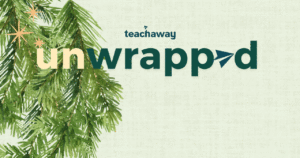When applying for international teaching positions, your cover letter is often your first introduction to a school.
It’s your chance to show not just your qualifications, but also your personality, teaching philosophy, and enthusiasm for teaching abroad.
A thoughtful, well-written cover letter can set you apart from hundreds of other applicants.
Why your cover letter matters
Schools abroad receive applications from teachers all over the world. While your resume lists your experience and skills, your cover letter provides context and tells the story behind your teaching journey. A strong cover letter shows:
- Why you want to teach in that specific country or school
- How your teaching style aligns with their values
- What unique skills or perspectives you bring to the classroom
Think of it as your opportunity to bridge the gap between the bullet points on your resume and the person behind them.
Research before you write
A generic letter won’t grab attention. Schools want to feel that you’ve taken time to understand them. Before you start writing:
- Visit the school’s website and read their mission statement
- Look at the curriculum they follow (IB, British, American, etc.)
- Learn about their student population and community
Take note of any recent initiatives, achievements, or programs
These details allow you to tailor your letter so it feels specific and genuine.
Structure your cover letter with intention
A clear structure keeps your letter easy to read and professional. Aim for one page and follow this flow:
- Greeting
Address the letter to the hiring manager or school principal if possible. If not, “Dear Hiring Committee” is fine, but bonus points if you adapt to local norms. A culturally aware greeting shows effort right from the start. - Introduction
Mention the position you’re applying for and show enthusiasm for both the role and the location. Example:
“I am excited to apply for the Middle School English position at [School Name] in [Country]. With five years of experience teaching English and a passion for cross-cultural education, I am eager to contribute to your diverse and vibrant school community.”
💡 Golden tip: Add a touch of cultural resonance here. For instance, reference the host country’s approach to education or a value that excites you. - Body
Highlight your most relevant teaching experienceExplain how your teaching philosophy aligns with the school’s valuesMention your adaptability, cultural awareness, and commitment to student growthIf applicable, note certifications like TEFL or IB training - Conclusion
Reiterate your excitement, thank the school for their consideration, and express interest in an interview. Example:
“I look forward to the opportunity to bring my experience and passion for teaching to [School Name]. Thank you for considering my application.”
Small touches that make a big impact
Most cover letter guides stop at structure, but these extra touches can transform a “good” cover letter into a memorable one:
- Choose your “yellow scarf.” Borrow this metaphor: your yellow scarf is the unique trait that makes you stand out. Pick the version of yourself that best matches the school’s ethos—perhaps your skill with outdoor learning for an eco-focused school, or your mindfulness approach for a wellness-oriented one.
- Frame your strengths as solutions. Instead of just listing skills, connect them to the school’s goals: “As you expand your STEAM offerings, my robotics program experience can support both innovation and student engagement.”
- Tell a micro-story. Share a two-sentence classroom anecdote that captures your style. Stories stick far better than claims like “I’m passionate.”
- Mirror their tone. If the school’s website is warm and community-driven, match that in your letter. If it’s formal and academic, lean toward polished and professional.
- Add a cultural detail. Even something small, like noting you’re learning the local language or referencing a cultural tradition respectfully, can show adaptability and respect.
Showcase cultural adaptability
Teaching abroad isn’t just about the classroom, it’s about adapting to a new culture, lifestyle, and community. Schools want to know you’ll thrive in their environment. Highlight experiences such as:
- Travel, volunteering, or work abroad
- Language learning efforts
- Times you’ve successfully adapted to new teaching systems or diverse student needs
These examples show you’re flexible, curious, and resilient.
Common mistakes to avoid
- Being too vague: Avoid generic phrases like “I am a passionate teacher.” Back them up with real examples.
- Repeating your resume: Use your letter to add context, not duplicate bullet points.
- Focusing only on yourself: Frame your skills in terms of how they benefit the students and school.
- Writing too long: Keep it under one page. Brevity shows respect for the reader’s time.
Quick checklist before you hit send
- Tailored to the specific school and role
- Clear structure (intro, body, conclusion)
- Professional tone, but still warm and personal
- Proofread for grammar and spelling
- Saved as a PDF for consistent formatting
A compelling cover letter can be the difference between being overlooked and being invited to interview.
By tailoring your letter to each school, showcasing your adaptability, and adding thoughtful touches that most applicants miss, you’ll stand out from the crowd.
Browse Teach Away’s teaching jobs to find positions that excite you, and put these tips into practice. If you’re still working toward certification, explore TEFL certification options to strengthen your application.



